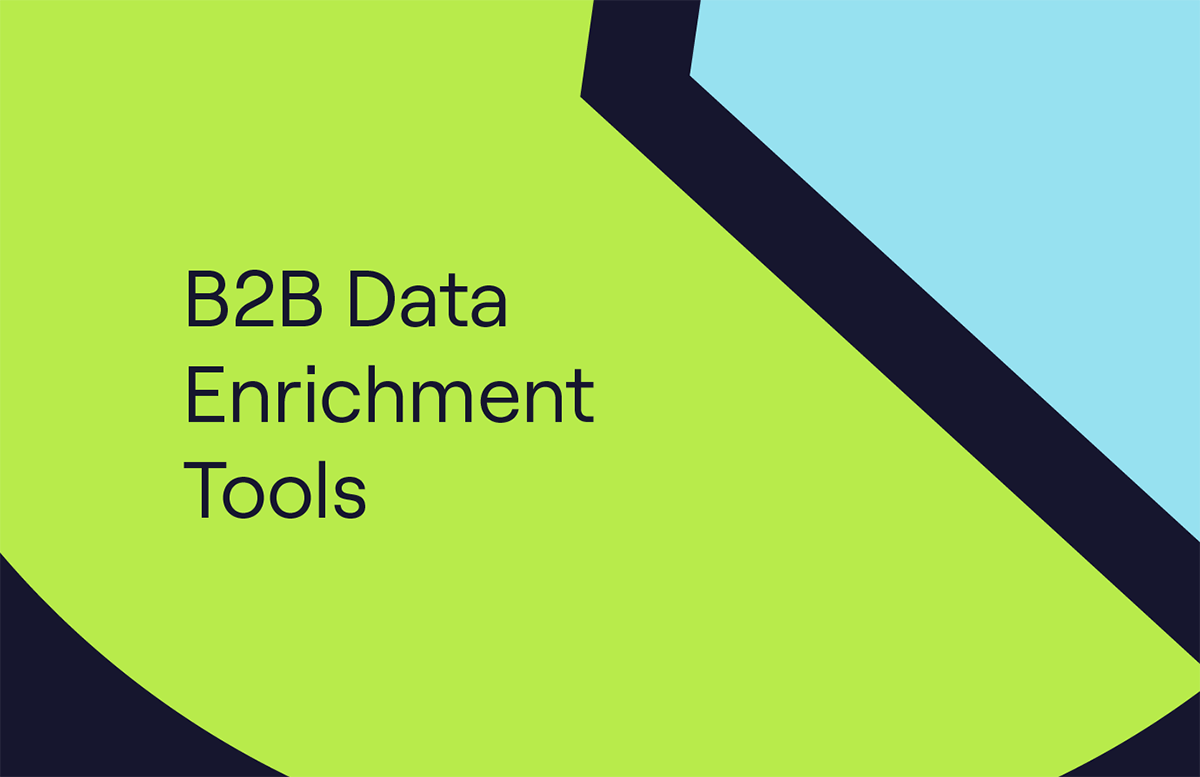DaaS: Data-driven Growth With Intent and Contextual Data
Expanding into new European markets sounds like a logical next step for any high-growth B2B company. But in practice, it’s one of the most complex and risky GTM moves you can make.
Whether it’s different languages and buyer expectations or stricter data regulations and unfamiliar competitive landscapes, what works in your home market rarely translates seamlessly across the EU.
Even foundational GTM motions like building ICPs, launching outbound, or running campaigns can fall flat when the context needed for data-driven growth is missing.
That’s why many revenue teams stall early in expansion. They go in with:
- Limited insight.
- Static prospect lists.
- A heavy dose of guesswork.
But it doesn’t have to be that way.
Today, high-performing teams are using DaaS (Data as a Service) to fuel expansion strategies with real-time signals and region-specific context.
Instead of relying on outdated databases or recycled strategies, they’re arming sales and GTM teams with two critical ingredients:
- Intent data: Knowing who’s showing buying signals, even without brand recognition.
- Contextual data: Understanding the right time, message, and motion at a local level.
Together, these insights transform EU market entry from a cold start into a signal-led playbook that’s faster, more relevant, and, by design, more compliant.
In this blog, we’ll explore how intent and contextual data work together to power smarter European expansion and how you can leverage DaaS to give your teams the insight they need to win in unfamiliar markets.
The unknowns of European market entry
Ask any GTM leader what makes European expansion hard, and you’ll rarely hear just one thing. That’s because the challenge isn’t just market entry, it’s market understanding.
Selling into the EU isn’t like launching into a single new territory. It’s entering a region made up of distinct cultures, compliance laws, buyer behaviours and business expectations.
What works in one country might underperform entirely in another, not because the product is wrong, but because the context is missing.
Here are a few of the biggest unknowns GTM teams face:
1. Cultural and language nuance
Messaging that resonates in the UK might feel too casual in, say, Germany. A campaign that converts in France may fall flat in the Nordics.
Even small language or tone missteps can impact response rates and credibility, especially when selling to senior decision-makers.
2. Data privacy and compliance
The EU isn’t just governed by the GDPR. Countries like Germany and France often introduce additional consent layers.
Sales teams unfamiliar with these rules risk outreach that’s not just ineffective, but could also be non-compliant. And when compliance gets shaky, trust runs out very quickly.
3. ICP drift
Your ideal customer profile in the US or UK might not map cleanly onto buyers in the EU. Buyer roles, org structures, and tech adoption vary widely.
Without fresh, local data to guide segmentation and targeting, teams often go after the wrong personas or miss key ones altogether.
4. Operational blind spots
Without prior presence, your reps don’t have pipeline history, warm leads, or on-the-ground feedback to rely on.
Marketing teams might not have performance benchmarks for regional channels, and RevOps may struggle to model territory plans without reliable TAM data. This creates a vacuum, which slows everything down.
These unknowns are why many GTM teams rely on gut feel or generic databases when expanding into Europe - and they’re exactly why that expansion stalls.
When the data isn’t region-ready, compliant, or context-rich, every motion that follows, from outreach to reporting, is built on shaky ground.
That’s where DaaS becomes a strategic advantage. Instead of waiting to “figure it out” post-launch, it lets you enter new markets with a clear picture of demand, opportunity, and timing, before you even land.
Antoine Cornet, Head of Revenue Operations at Cognism, said:
“What businesses can get wrong is thinking of Europe as one market. Each country has its own language, culture, and way of doing business.”
“For example, in the UK, people work in August, but in France, people may not actually work that month. Without local understanding, and language support, you’ll struggle.”
Intent data: Knowing where (and when) to strike
When you’re selling into a new region, especially one where your brand is not well-known, timing is everything.
You can have the right product, the right message, and the right person, but if they’re not in a buying motion, you’re just background noise.
That’s why intent data is so powerful during EU expansion. It gives GTM teams visibility into where demand already exists, so they’re not going in cold.
What is intent data?
To put it simply, intent data tracks buying signals. It tells you when a company is actively researching topics related to your product or category, before they fill out a form or raise their hand. Think of it as a pulse check on real-time buyer interest.
For example, if a healthcare company in France is seeing a spike in research on “compliant sales engagement platforms,” that’s a signal.
They might not know your name yet, but they’re problem-aware and likely open to solutions.
Why intent data matters for European expansion
When you don’t have historical data or brand traction in a region, intent is your shortcut to relevance.
It allows GTM teams to:
- Prioritise outreach to accounts already in an active research cycle.
- Focus limited resources on the areas showing real signs of opportunity.
- Shorten time-to-first-deal by identifying buyers already in motion.
Instead of generic outbound, reps can start with companies that are closer to the point of need. Marketing can align campaigns to mirror intent-driven demand.
And sales leaders can build pipeline in new markets with far less guesswork, turning expansion into a repeatable, data-driven growth motion.
This is especially valuable across fragmented markets like the EU, where buying cycles and engagement patterns differ country to country. What looks like low interest in one region might actually be latent demand elsewhere, if you know where to look.
Contextual data: Understanding how to sell
If intent data tells you who is ready to buy, contextual data helps you understand how to engage them, especially when you’re selling into unfamiliar territory.
Without a local network, customer references, or regional knowledge, your team needs more than just a list of names and job titles.
They need real-world signals that show what’s happening inside an account, so they can shape outreach that feels timely, relevant, and useful rather than random.
What is contextual data?
Contextual data includes business signals that give depth and relevance to your targeting. Things like:
- Job changes for key personas.
- Company funding rounds or acquisitions.
- Hiring spikes that indicate growth.
- Tech stack insights that show what tools are in use.
- News mentions or product launches.
- Engagement activity, like website visits or email clicks.
These aren’t just vanity signals, they’re sales triggers. They help reps start smarter conversations and prioritise accounts where something is changing.
For example:
If a mid-market company in Germany has just hired a new CRO and posted ten sales roles, you don’t need local relationships to know there’s an opportunity there. That’s motion. And motion is what contextual data helps you spot.
Why contextual data matters in EU expansion
When you’re entering a new country, you don’t have the benefit of historical insight. No warm pipeline, no prior buyer behaviour to analyse, no localised win/loss data.
Contextual signals help fill that gap. They give your team:
- A reason to reach out beyond a generic pitch.
- An understanding of what’s changed inside a target account.
- A path to relevance, even without deep regional experience.
That shift, from outreach to insight-led engagement, is where real traction starts. Instead of sending cold intros into a new market, your reps are saying:
“I saw your team’s recent expansion in the UK. Usually that’s when revenue leaders start looking at X.”
It’s outreach grounded in reality. It’s the kind of message that lands, regardless of geography.
Bringing contextual signals into your GTM workflow
When contextual data is integrated into your existing GTM systems, your CRM, sales engagement platform, or enrichment process, it becomes part of your daily motion.
Whether it’s:
- Routing new job change alerts to SDRs.
- Triggering outreach sequences when a company hits a hiring threshold.
- Or surfacing key buying signals within a territory view.
These signals help revenue teams prioritise the proper accounts and tailor messaging.
Antoine said:
“All those data points, job changes, funding, tech stack, hiring, go into a scoring mechanism.”
“That scoring tells us the next best account to work on, and whether it should be assigned to an SDR right now.”
For GTM teams expanding into Europe, this removes one of the most significant barriers: acting without context. Now, reps don’t need to guess who to call or what to say - the signals tell them.
And when paired with accurate, region-specific contact data, those signals become momentum.
Combine intent and context for smart GTM motion
Intent and contextual data are powerful on their own, but when combined, they create a GTM engine that’s especially valuable in new, unfamiliar regions.
Think of it this way:
- Intent tells you where interest is heating up.
- Context tells you what’s changing inside the account.
Together, they give your team not just who to target, but why now, how to reach them, and what to say.
In a business expansion context, this becomes your fast-start formula for achieving data-driven growth:
- Identify high-potential regions using aggregated intent trends (e.g. rising research around your category in France or DACH).
- Surface companies showing real-time interest, such as those spiked on specific topics, visiting your website, or engaging with competitor terms.
- Layer on context: job moves, funding, hiring surges, tech usage, all signals that help sharpen your message.
- Prioritise outreach where intent and context align, that’s your sweet spot.
Instead of casting a wide net and hoping something lands, your GTM team focuses on warm, insight-led conversations, even in markets where they’ve never sold before.
And when this approach is built into your GTM strategy, it’s scalable. Sales, marketing, and RevOps can work from the same live signals, aligning execution across the funnel, from pipeline generation to conversion.
Antoine said:
“Once those signals are in place, it’s about operationalising them, integrating into SDR and AE flows so they know exactly which accounts and contacts to work, and what sequences to use.”
Local compliance is part of context
When entering EU markets, it’s not just about who to contact, it’s about whether you’re allowed to.
Each country interprets GDPR, local DNC rules, and consent requirements differently. What’s acceptable in the UK might not be enough in Germany.
If you get it wrong, it’s not just a missed opportunity; it’s a risk to your brand.
That’s why compliance can’t be an afterthought. It needs to be baked into your data strategy from day one.
If your team is working from stale, non-compliant records, no amount of timing or messaging will save the outreach. But if opted-in, permission-based data powers your signals and enrichment, your reps can move with confidence.
Context isn’t only knowing what’s changed at a company; it’s knowing the legal frameworks that shape how and when you can engage. The best GTM teams treat compliance as a competitive advantage rather than a blocker.
And when your systems surface only compliant, region-ready contacts, your sales motion doesn’t just scale, it does so with trust built in.
Final word: Data-driven growth turns unknowns into opportunities
European expansion will always come with unknowns, new markets, new behaviours, and new risks. But with the right data, your team doesn’t need to go in blind.
By combining intent signals with contextual insight, GTM teams can stop guessing and start acting, with timing, relevance, and compliance built in from the start.
This isn’t about doing more outreach. It’s about doing smarter outreach, prioritising the right accounts, speaking to the right personas, and showing up at exactly the right time, even in places you’ve never sold before.
With a DaaS approach powering your expansion, data moves from being a static asset to a live engine for growth. It fuels faster decisions, tighter alignment, and real traction, wherever you go next.
And in a region as nuanced as the EU, that’s not just helpful. It’s essential.


/csv%20enrichment/csv-enrichment-card.webp)
